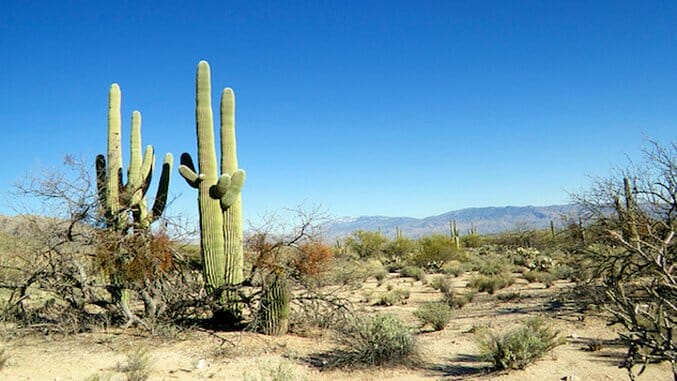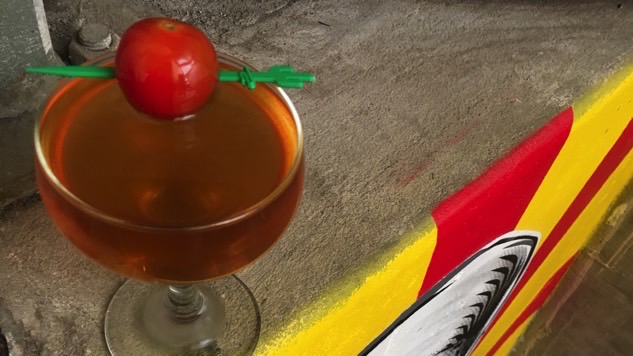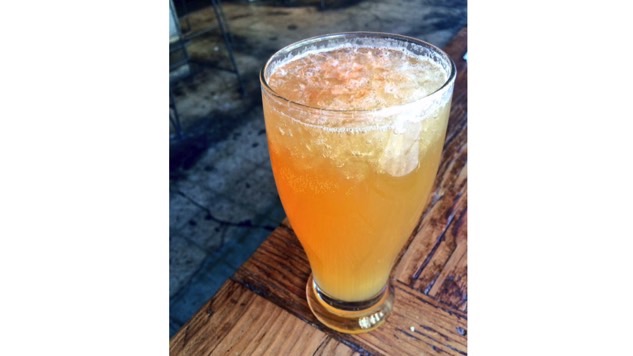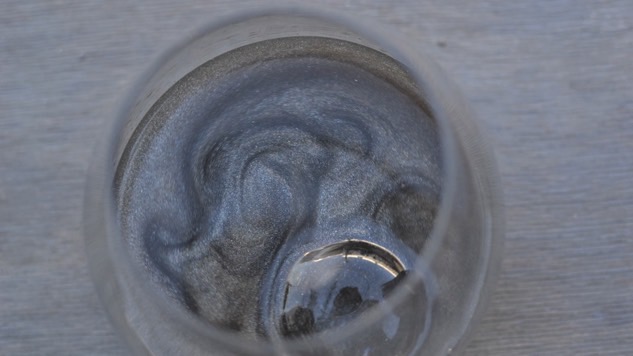City in a Glass: Tucson
Photo by Henry T. McLin, CC-BY-NC-ND
Thirsty? You’re in luck. In Paste’s drinking-and-traveling series, City in a Glass, we mix up a city’s signature swills and slide them down the bar to readers. Grab a stool. This round, in Tucson, Arizona, is on us.
Tucson, Arizona, is a city on the edge. Located in the Sonoran Desert, a mere hour’s drive from the border, the city’s drinking culture draws from southwestern U.S. and northern Mexico. Agave spirits like mezcal, which are now trendy around the country, were popular here a decade ago. Every cocktail menu in town has drinks made with tequila’s lesser-known cousins such as bacanora.
“The border is irrelevant here,” says local barman Bryan Eichhorst, who grew up in Tucson drinking agave moonshine. “Someone always shows up to a party with a two-liter bottle filled with homemade bacanora. This stuff ran through our veins long before there was any commercial marketing around it.”
This was also long before artisanal, agave-based spirits were available to buy in Arizona. A few years ago, Eichhorst did something about it. “I went a couple of times to Oaxaca [Mexico] and started bothering the distributors,” he says. “Then I rallied all the troops in Tucson, all the bartenders, and we promised to buy a lot of it if they brought in more brands. And we threatened to boycott them if they didn’t.”
The arm-twisting worked: Back then Eichhorst could only stock a handful of mezcal bottles behind his bar. Now he has 60 mezcals, plus all his other bottles of bacanora, high-end tequila and additional interesting agave distillates. He continues to lead groups of bartenders on trips to Mexico every year to learn more about the spirits.
The Old Pueblo’s southwestern drinking heritage is starting to assert itself, too. In the coming months two highly anticipated whiskey bars are opening. One of them, the Owls Club, will be a dusty cowboy bar serving Old West-inspired folk drinks like the Rock And Rye: a liqueur made by dissolving rock candy in cheap rye.
On this city drinks tour, we’re going to introduce you to three Tucson drinks, show you where to find them and even how to replicate a couple of them at home.
![]()
1. Tomacco
Where to order: Tough Luck Club
 Photo courtesy of Tough Luck Club
Photo courtesy of Tough Luck Club
If you build a bar in an old funeral home, you’ve got to bring a certain sense of levity to the craft. That’s why Tough Luck Club cocktail bar—located in the underground embalming room of a one-time funeral home—doesn’t take itself so seriously. “If you want to have a carefully made $14 cocktail or have a conversation about the spirits behind the bar, we will be happy to do that for you,” says co-bar manager Stephen Ott. “Or if you want to come in and take some shots and drink beer with your buddies, that’s cool too. We’re a venue for both of those things. We like it that way.”
-

-

-

-

-

-

-

-

-

-

-

-

-

-

-

-

-

-

-

-

-

-

-

-

-

-

-

-

-

-

-

-

-

-

-

-

-

-

-

-

 Photo by Alyson Sheppard
Photo by Alyson Sheppard Photo courtesy of Obon
Photo courtesy of Obon






































